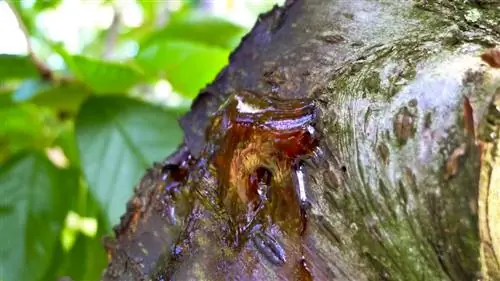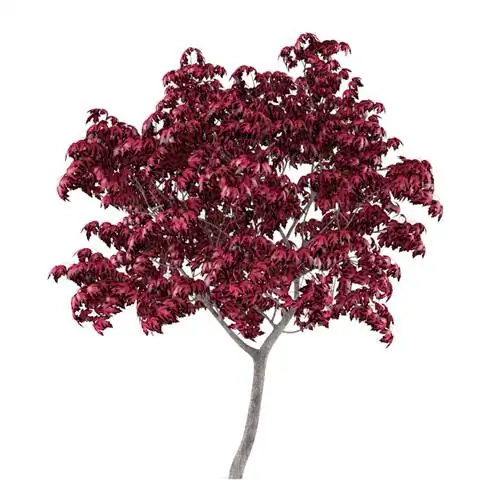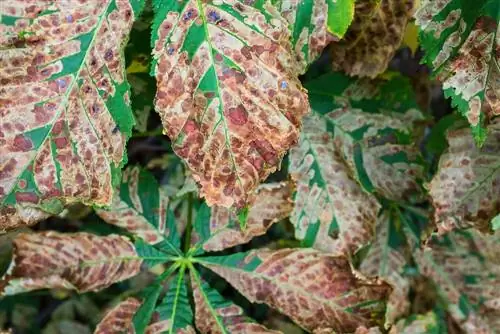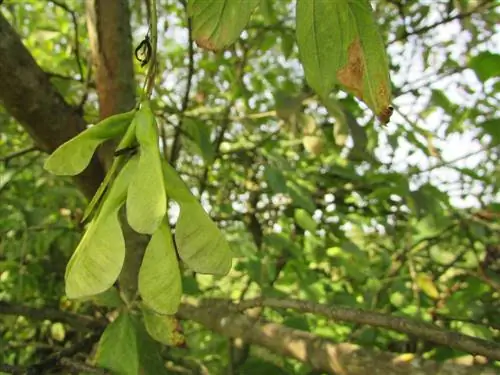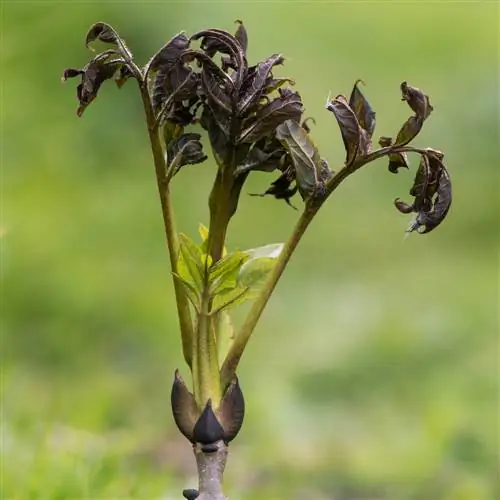- Author admin [email protected].
- Public 2023-12-16 16:46.
- Last modified 2025-01-23 11:19.
Marssonina leaf spot is the most common fungal disease in walnut trees. In this article you will learn everything about the causes, symptoms and how to combat the dreaded walnut disease.
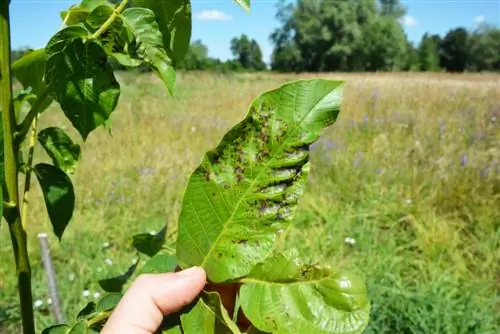
What causes Marssonina disease in walnut trees and how to combat it?
Marssonina leaf spot disease on walnut trees is caused by the fungus Gnomonia leptostyla and shows symptoms such as brown spots on leaves and fruits. The fight is carried out by collecting infected plant parts and prevention through regular cutting and resistant varieties.
Marssonina leaf spot in portrait
Marssonina juglansis, the Latin name for the disease, is also known as walnut scab, leaf scab and anthracnose.
The pathogen Gnomonia leptostyla acts as the trigger. Interesting fact: This pathogen was originally called Marssonina juglansis and thus gave the disease its name.
Like every mushroom, Gnomonia leptostyla thrives particularly well in damp weather and moderate to warm temperatures.
Symptoms of Marssonina disease
First, the appearance of the leaves and fruit casings changes. Similarities to another walnut tree disease, walnut blight, cannot be denied in its early stages.
In both diseases, brown, angular-shaped spots appear on the leaves and fruit casings. These spots quickly grow larger until they cover almost the entire leaf or fruit and eventually even merge into one another.
These brown spots usually reveal light centers. The brown areas look like they have been burnt and are so dry that some of the tissue actually breaks away and only leaf veins and stems remain. Sometimes the leaves also fall off.
On the underside of the leaf there are small black-brown, ring-shaped dots with a typical spore appearance. This collection of spores enables differentiation from bacterial burn.
If the fungal infestation is severe, it weakens the entire walnut tree, which can also lead to premature fruit drop. However, the direct effect on the walnuts is much worse: the spores attack the green fruit peel and often penetrate into the kernel (especially in young fruits with soft wooden shells) - the result is
- a black wooden bowl,
- an infected nut kernel and
- Dry rot.
Good growth conditions for the fungus
- wet springs and summers
- Rain showers and wind
Rain showers and wind “help” to wash off and spread the spores.
Incidentally, older leaves are much more susceptible than young ones (in contrast to bacterial blight) - they offer more breeding ground for the spores.
Target Marssonina disease
- Carefully collect the leaves and fruit of infected walnut trees.
- Do NOT put the collected plant parts in the compost, but rather burn them if possible or throw them in the organic waste bin.
Preventing Marssonina leaf spot
You can prevent this walnut tree disease by cutting regularly.
In addition, when planting new plants, you should always choose varieties that have basic resistance to the pathogen (Gnomonia leptostyla).


